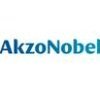Filter interviews by
Cohizon Life Sciences Limited ETP Chemist Interview Questions and Answers
Cohizon Life Sciences Limited ETP Chemist Interview Experiences
1 interview found
I applied via Company Website and was interviewed before Aug 2023. There were 2 interview rounds.
(6 Questions)
- Q1. Knowledge of ETP Operation
- Q2. ETP lab chemist knowledge
- Q3. STP plant operate
- Q4. MEE plant role in company
- Ans.
The MEE plant plays a crucial role in the company by treating wastewater from various processes to meet environmental regulations.
The MEE plant is responsible for treating wastewater generated from different processes within the company.
It uses multiple stages of evaporation to concentrate the wastewater and remove impurities.
The treated water is then reused or discharged in compliance with environmental regulations.
Th...
- Q5. Analysis of MLSS and MLVSS
- Ans.
MLSS and MLVSS are key parameters used in wastewater treatment to measure the concentration of solids in the system.
MLSS stands for Mixed Liquor Suspended Solids and represents the total concentration of solids (organic and inorganic) in the wastewater treatment system.
MLVSS stands for Mixed Liquor Volatile Suspended Solids and represents the concentration of organic solids in the system.
MLVSS is a subset of MLSS and i...
- Q6. Chemical doseging in ntr
- Ans.
Chemical dosing in water treatment is crucial for maintaining water quality and ensuring effective treatment processes.
Chemical dosing is the process of adding specific chemicals to water to achieve desired treatment outcomes.
The dosing rate and frequency depend on the water quality parameters and treatment objectives.
Examples of chemicals used for dosing in water treatment include chlorine for disinfection, coagulants...
Msc environmental science
Interview Preparation Tips
- FULL ETP knowledge any situation
Top trending discussions






Interview questions from similar companies

Difficult test
Great topic for discussion
Interview Preparation Tips

I applied via Walk-in and was interviewed in Sep 2024. There was 1 interview round.
(2 Questions)
- Q1. Sap knowledge and dispatch function knowledge
- Q2. Salar requirements
Interview Preparation Tips

I applied via Naukri.com and was interviewed before Sep 2020. There were 3 interview rounds.
Interview Questionnaire
1 Question
- Q1. What is your current role?
Interview Preparation Tips

I appeared for an interview before May 2021.
(1 Question)
- Q1. General question , technical and HR discussion
Interview Preparation Tips

Interview Preparation Tips

I applied via Recruitment Consulltant and was interviewed before Apr 2021. There were 4 interview rounds.
(1 Question)
- Q1. Basics about paints and resin
(2 Questions)
- Q1. What is your family background?
- Q2. What are your salary expectations?
(1 Question)
- Q1. Personal interview with Unit head
Interview Preparation Tips

I applied via Recruitment Consulltant and was interviewed in Jan 2024. There were 4 interview rounds.
30 questions in 30 mins
(1 Question)
- Q1. About Work and description of Imported consignments
(1 Question)
- Q1. Rapid 15 questions related to logistic management
(2 Questions)
- Q1. Team management
- Q2. Employee engagement
Interview Preparation Tips

I applied via Referral and was interviewed before Apr 2022. There were 3 interview rounds.

(1 Question)
- Q1. Questions related operations and manufacturing area
(1 Question)
- Q1. Interpersonal questions
Interview Preparation Tips

I applied via Recruitment Consulltant and was interviewed in Apr 2023. There were 3 interview rounds.

GK , Mathematics & Reasoning
(1 Question)
- Q1. Profile based interview
Cohizon Life Sciences Limited Interview FAQs
Tell us how to improve this page.
Cohizon Life Sciences Limited Interviews By Designations
- Cohizon Life Sciences Limited Production Officer Interview Questions
- Cohizon Life Sciences Limited Project Manager Interview Questions
- Cohizon Life Sciences Limited Production Supervisor Interview Questions
- Cohizon Life Sciences Limited Assistant Manager Interview Questions
- Cohizon Life Sciences Limited Senior Project Manager Interview Questions
- Cohizon Life Sciences Limited QC Executive Interview Questions
- Cohizon Life Sciences Limited Engineering Manager Interview Questions
- Cohizon Life Sciences Limited Mechanical Engineer Interview Questions
- Show more
Interview Questions for Popular Designations
Cohizon Life Sciences Limited ETP Chemist Interview Process
based on 1 interview
Interview experience
Interview Questions from Similar Companies
Cohizon Life Sciences Limited ETP Chemist Reviews and Ratings
based on 1 review
Rating in categories
|
Production Officer
168
salaries
| ₹1.8 L/yr - ₹5.7 L/yr |
|
Assistant Manager
57
salaries
| ₹6.9 L/yr - ₹15 L/yr |
|
Senior Executive
52
salaries
| ₹4.6 L/yr - ₹11 L/yr |
|
Officer
45
salaries
| ₹2 L/yr - ₹6 L/yr |
|
Shift Incharge
37
salaries
| ₹3.5 L/yr - ₹9 L/yr |

Asian Paints

Berger Paints

Pidilite Industries

SRF
- Home >
- Interviews >
- Cohizon Life Sciences Limited Interview Questions >
- Cohizon Life Sciences Limited ETP Chemist Interview Questions











